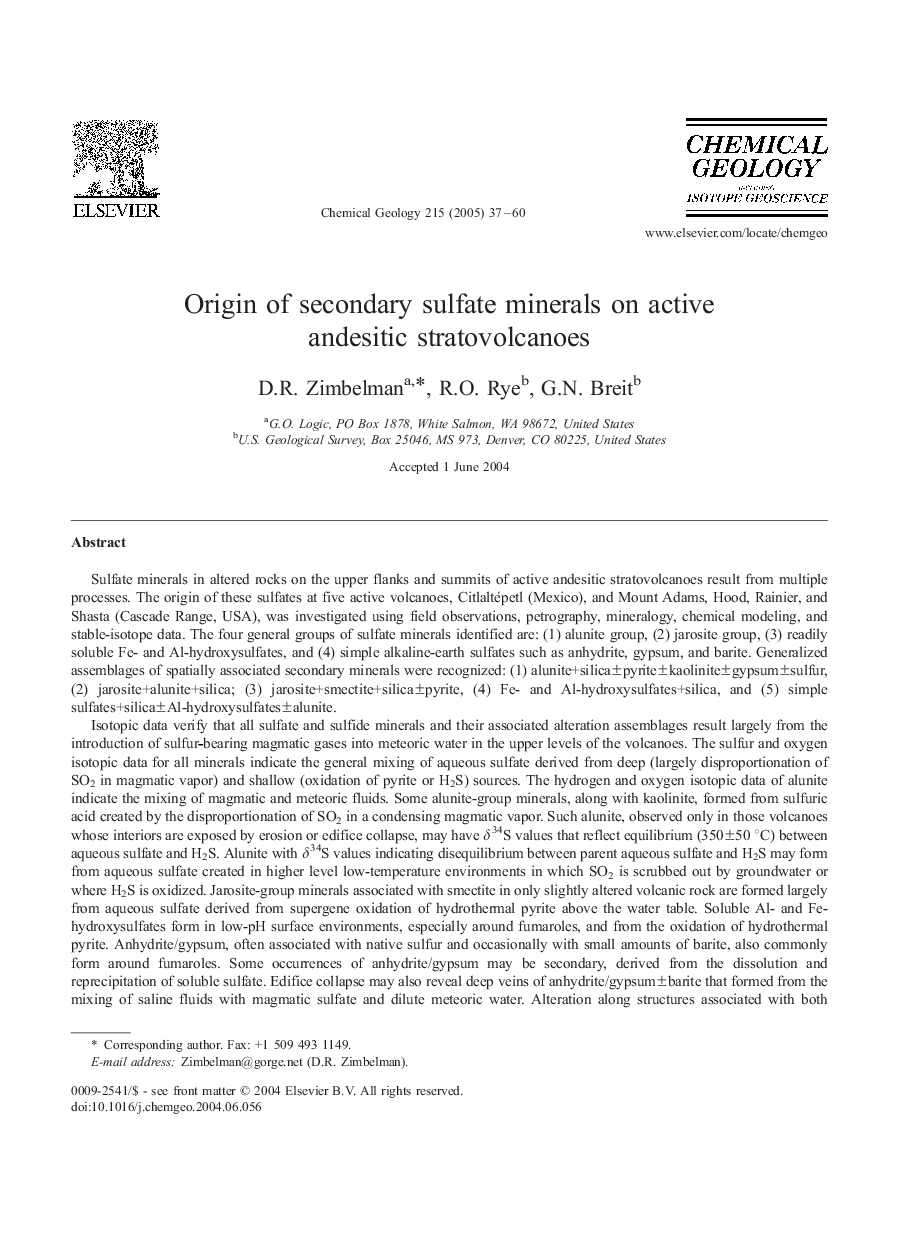| کد مقاله | کد نشریه | سال انتشار | مقاله انگلیسی | نسخه تمام متن |
|---|---|---|---|---|
| 9529208 | 1637793 | 2005 | 24 صفحه PDF | دانلود رایگان |
عنوان انگلیسی مقاله ISI
Origin of secondary sulfate minerals on active andesitic stratovolcanoes
دانلود مقاله + سفارش ترجمه
دانلود مقاله ISI انگلیسی
رایگان برای ایرانیان
کلمات کلیدی
موضوعات مرتبط
مهندسی و علوم پایه
علوم زمین و سیارات
ژئوشیمی و پترولوژی
پیش نمایش صفحه اول مقاله

چکیده انگلیسی
Isotopic data verify that all sulfate and sulfide minerals and their associated alteration assemblages result largely from the introduction of sulfur-bearing magmatic gases into meteoric water in the upper levels of the volcanoes. The sulfur and oxygen isotopic data for all minerals indicate the general mixing of aqueous sulfate derived from deep (largely disproportionation of SO2 in magmatic vapor) and shallow (oxidation of pyrite or H2S) sources. The hydrogen and oxygen isotopic data of alunite indicate the mixing of magmatic and meteoric fluids. Some alunite-group minerals, along with kaolinite, formed from sulfuric acid created by the disproportionation of SO2 in a condensing magmatic vapor. Such alunite, observed only in those volcanoes whose interiors are exposed by erosion or edifice collapse, may have δ34S values that reflect equilibrium (350±50 °C) between aqueous sulfate and H2S. Alunite with δ34S values indicating disequilibrium between parent aqueous sulfate and H2S may form from aqueous sulfate created in higher level low-temperature environments in which SO2 is scrubbed out by groundwater or where H2S is oxidized. Jarosite-group minerals associated with smectite in only slightly altered volcanic rock are formed largely from aqueous sulfate derived from supergene oxidation of hydrothermal pyrite above the water table. Soluble Al- and Fe-hydroxysulfates form in low-pH surface environments, especially around fumaroles, and from the oxidation of hydrothermal pyrite. Anhydrite/gypsum, often associated with native sulfur and occasionally with small amounts of barite, also commonly form around fumaroles. Some occurrences of anhydrite/gypsum may be secondary, derived from the dissolution and reprecipitation of soluble sulfate. Edifice collapse may also reveal deep veins of anhydrite/gypsum±barite that formed from the mixing of saline fluids with magmatic sulfate and dilute meteoric water. Alteration along structures associated with both hydrothermal and supergene sulfates, as well as the position of paleo-water tables, may be important factors in edifice collapse and resulting debris flows at some volcanoes.
ناشر
Database: Elsevier - ScienceDirect (ساینس دایرکت)
Journal: Chemical Geology - Volume 215, Issues 1â4, 15 February 2005, Pages 37-60
Journal: Chemical Geology - Volume 215, Issues 1â4, 15 February 2005, Pages 37-60
نویسندگان
D.R. Zimbelman, R.O. Rye, G.N. Breit,